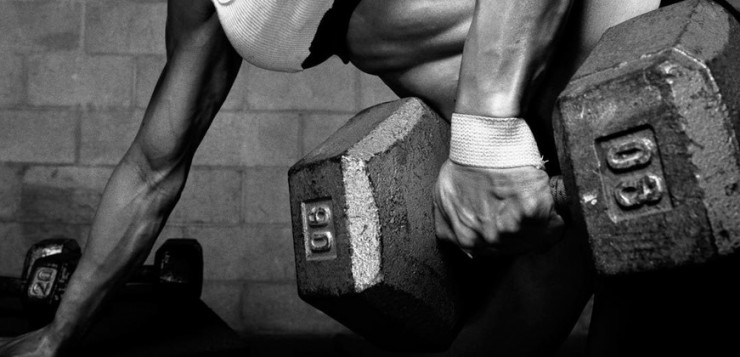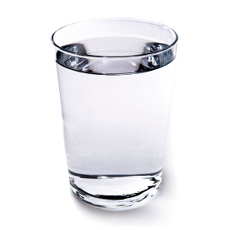Caloric Deficit and Caloric Maintenance
In order to cut (to lose weight and lower your body fat) you first need to know how many calories you need to consume on a daily basis in order to maintain your weight- this is what we call « maintenance ». Maintenance is the stability of your weight across time, based on your activity level and your lifestyle.
A high-level athlete who trains six times a week definitely has a higher maintenance than a father who plays badminton when the sun shines.
Knowing your maintenance is paramount, not only for your cut, but also to help you reach your future goals (gain muscle, body recomposition, etc…). While eating at maintenance stabilizes your weight, a caloric deficit leads you to lose weight and a surplus makes you gain weight.
As you can see, cutting then requires you to reduce your caloric intake. In order to figure out your maintenance, many formulas exist, but bear in mind that these formulas are only based on estimations (but they can still give you a good idea).
Hopefully, we have everything for you here! Use this link to determine your maintenance.
Simply input your weight (in kilos), your height (in centimeters), and your activity level (examples provided), and your maintenance will be calculated. You will subtract the deficit you should have from this number. Usually, a 20/25% deficit is a good start. This means you will have to eat 20% less than the amount required to maintain your weight (if we suppose your weight has been stable for the past 4 months or so).
In my case, my maintenance oscillates between 2700-2800 calories; this means that I’ll have to eat roughly 2100 calories in order to lose weight.
Many people are tempted (and many do) to increase their deficit, but eating 1 serving of veggies and 10 chicken breasts is not a good solution: actually, the greater the deficit, the higher your chances of losing muscle mass are. Without going into detail, you just need to find the right middle ground between preserving your muscle and maintaining your deficit and fat loss.
Also, know that the higher your body fat, the higher the deficit can be. Conversely, when you are already lean (around 10% body fat), a higher deficit only increases your chances of muscle degradation.
You now have all the tools needed for a cut as you know your maintenance. In the next part, I will present how to use these numbers.
Macronutrient Repartition
As previously explained, the three main macronutrients we use are carbohydrates, proteins and fats (technically you don’t need carbohydrates, but this is not the point here). Here is a simple explanation of how these nutrients work:
- Proteins are compounds vital to any organic life; they initiate muscle development (but not only!). You can find protein in all meats (chicken, turkey, etc..), in legumes and grains (lentils, quinoa, bulgur, etc..) and vegetables (especially broccoli). Virtually, every nutrient contains a source of protein (in varying amounts).
- Lipids are a great energy source for your body and the main compound in cell membranes. Oils are lipids (olive oil, linseed oil, etc…), and dried fruits also contain lipids (almonds, walnuts, pistachios, cashew nuts…)
- Finally, carbohydrates are a quasi-direct energy source for your body (depending on the molecular complexity). Carbohydrates are available in all cereals, grains (rice, wheat, oats), vegetables and fruits.
If you want to succeed in your cut, you need to understand these notions, but also if you want to improve your health (by making better dietary choices).
In most cases, here is how a macronutrient repartition could be set up during a cut, in order to be optimal or “safe”:
- Proteins should be consumed in important quantities- the latest consensus regarding resistance-training athletes is from 1.2 to 1.5 grams per pound of body weight (or 2.6 to 3.3 g per kilo of body weight)
- Lipids should be increased as well; while it is usually admitted that from 25 to 30% of your diet should come from fats, increase your intake to 35% give or take. In this case, it means 35% out of your calculated deficit.
- Finally, carbohydrates will be used in order to fill up your total caloric intake (that is, at a deficit). Let’s do the math:
1 gram of protein yields 4 calories
1 gram of lipids yields 9 calories
1 gram of carbohydrates yields 4 calories
For an average Joe, that weights 150 pounds
- 2100 calories – (4 * 225 ) = 900 kCal from protein.
- From our deficit, we also deduce 35% from fats = 975 kCal from lipids.
- 900 + 975 = 1875 kCal
- 2100 – 1875 = 225. This leaves me around 225kCal from carbohydrates, or 56 grams.
Bear in mind that these are estimations, but they definitely are a solid base on which to setup your figures.
2100 calories example menu
Morning ~ 600 calories:
- 5 eggs in an omelet
- 1 pieces of whole-wheat toast
- 1 yogurt
- A fruit or a glass of orange juice
Snack (during the day) ~ 150 calories:
- A small handful of nuts (almonds, walnuts, etc..)
Lunch ~ 600 calories:
- A big salad
- Vegetables ad-Librium, explore combinations and try new ones!
- 300 grams of chicken breast.
- 60 grams of rice
- Half of an avocado
- 1 tablespoon of oil (linseed, hemp, nut, olive, etc…)
Pre-workout ~ 150 calories:
- 1 shaker
- 1 fruit or a source of carbohydrates
Dinner ~ 600 calories:
- A medium salad of raw vegetables
- 70 grams of lentils
- 100 grams of fatty fish
- A full teaspoon of oil (linseed, hemp, etc…)
Do not forget to drink water all day long- lots of water.
Dietary Supplements
While you are cutting, your whole body will experience some perturbations, and it is more likely to weaken. A caloric deficit assumes a vitamin and minerals deficit as well. In this case, some dietary supplements may help you:
- Multi-vitamin supplements.
- BCAAs (Branched Chain of Amino Acids)
- Creatine monohydrate
- Caffeine
- Fish-oils (Omega 3)
- Green Tea
Part 1: IntroductionPart 3: Fine Tuning



